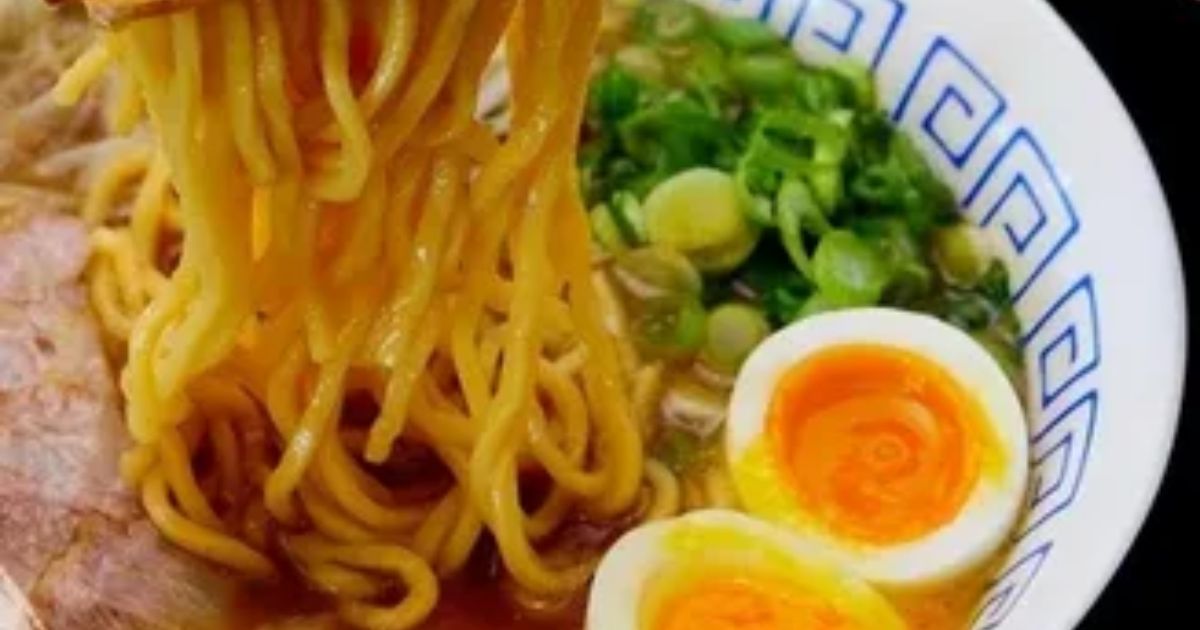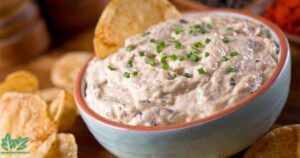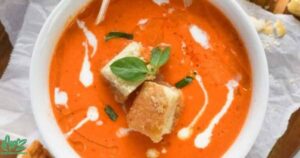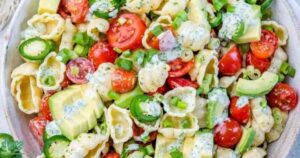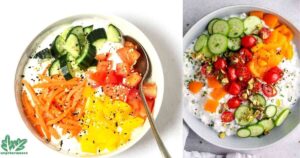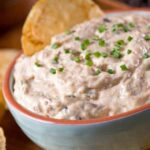Published on October 19, 2024
Are you tired of bland, mushy ramen noodles that leave you unsatisfied? Do you long for a bowl of steaming, flavorful ramen that rivals your favorite restaurant?
The struggle is real for many ramen lovers who can’t seem to replicate that perfect bowl at home. But fear not! This comprehensive guide will teach you how to cook ramen noodles like a pro, transforming your humble packet of instant noodles into a gourmet meal.
We’ll explore various techniques, ingredients, and tips that will elevate your ramen game and satisfy your cravings. Get ready to become a ramen master in your own kitchen!
Ramen Noodles
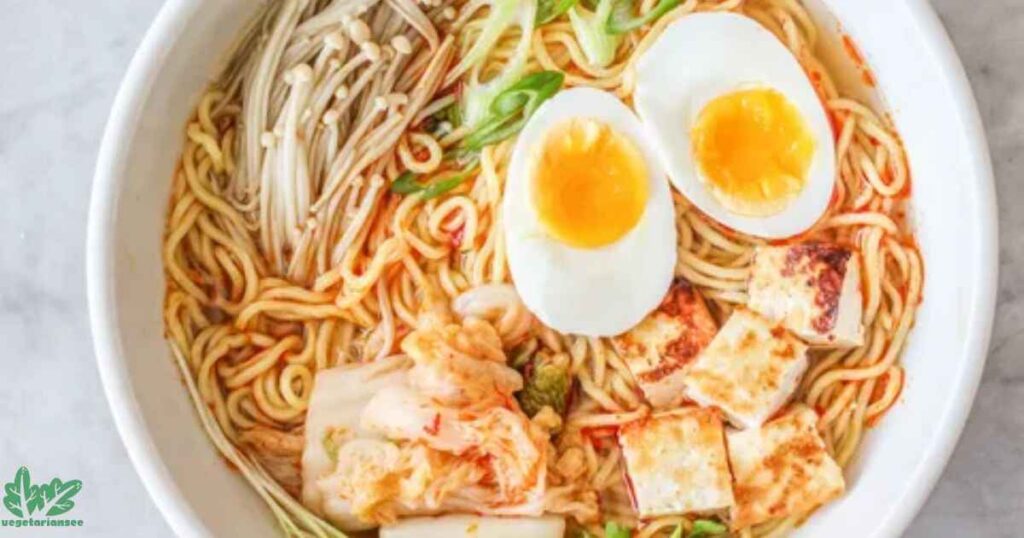
Ramen noodles have come a long way since their invention in 1958 by Momofuku Ando. Originally created as a quick and affordable meal solution, ramen has evolved into a global culinary phenomenon.
Today, ramen isn’t just about instant noodles; it’s a versatile dish that can be customized to suit any palate.
From bustling Tokyo ramen shops to trendy New York eateries, ramen has captured the hearts and taste buds of food lovers worldwide. This guide will walk you through everything you need to know about how to cook ramen noodles, from understanding different types to mastering advanced techniques.
Whether you’re a college student on a budget or a gourmet chef looking to expand your repertoire, there’s something here for everyone.
Understanding Ramen Noodles
Types of Ramen Noodles
When learning how to cook ramen noodles, it’s essential to understand the different types available. Instant ramen is the most common and convenient, perfect for quick meals.
Fresh ramen offers a more authentic taste and texture, often found in specialty stores. Dried ramen noodles are a middle ground, providing better quality than instant without the short shelf life of fresh noodles.
Each type of ramen noodle has its unique characteristics and cooking methods. Instant ramen cooks in minutes, while fresh and dried noodles may require more time and attention.
Experimenting with different types will help you find your favorite for various recipes and occasions.
Nutritional Profile of Ramen Noodles
While ramen is delicious, it’s important to consider its nutritional value. A typical packet of instant ramen can be high in calories and sodium but low in essential nutrients. However, there are ways to make your ramen healthier.
By adding vegetables, lean proteins, and using less of the seasoning packet, you can create a more balanced meal. Some brands now offer whole grain or vegetable-based noodles, providing more fiber and nutrients.
Understanding the nutritional profile helps you make informed choices when cooking and enjoying your ramen.
Essential Ingredients for Cooking Ramen Noodles
Base Ingredients
The foundation of any good ramen dish starts with quality noodles and broth. When learning how to cook ramen noodles, choosing the right base ingredients is crucial. For a basic ramen noodle recipe, you’ll need:
- Ramen noodles (instant, fresh, or dried)
- Water or broth (chicken, vegetable, or beef)
- Seasoning (from the packet or your own blend)
These simple components form the canvas for your ramen creation. The type of noodles and broth you choose will significantly impact the final flavor and texture of your dish.
Optional Add-ins
To elevate your ramen from basic to gourmet, consider adding extra ingredients. Popular add-ins include:
- Proteins: Soft-boiled egg, sliced pork, chicken, or tofu ramen noodles
- Vegetables: Corn, bamboo shoots, spinach, or ramen with mushrooms
- Aromatics: Garlic, ginger, green onions
These additions not only enhance the flavor but also boost the nutritional value of your ramen. Experimenting with different combinations will help you create your perfect ramen noodle bowl.
Step-by-Step Guide: How to Cook Ramen Noodles
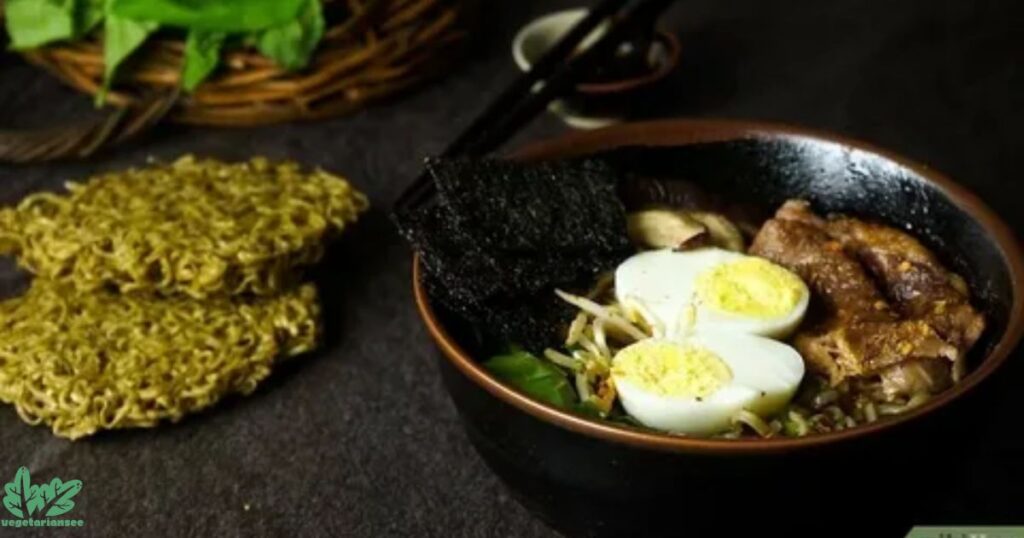
Step One: Preparing Your Ingredients
Before you start cooking, gather all your ingredients and tools. This preparation ensures a smooth cooking process. Measure out your water or broth, and have your chosen add-ins ready. If you’re using fresh vegetables or proteins, slice them in advance.
For those looking to create a healthy ramen noodles dish, this is the perfect time to prepare nutrient-rich add-ins like spinach or lean chicken. Having everything ready will make the cooking process more enjoyable and efficient.
Step Two: Boiling the Water or Broth
The key to perfect ramen starts with properly boiled water or broth. Use a pot that’s large enough to allow the noodles to move freely. Bring the liquid to a rolling boil over high heat. If you’re using broth, this is when its aroma will start to fill your kitchen.
For those making ramen without flavor packet, this step is crucial as it’s your opportunity to infuse the cooking liquid with flavor. Consider adding aromatics like garlic or ginger to the boiling water for an extra flavor boost.
Step Three: Adding the Noodles
Once your liquid is boiling, it’s time to add the noodles. If you’re using instant ramen, break up the noodle block before adding it to the pot.
For fresh or dried noodles, gently separate them as you add them to the water. Cook the noodles according to the package instructions, stirring occasionally to prevent sticking.
The cooking time can vary depending on the type of noodles you’re using. Instant noodles typically cook in 3-5 minutes, while fresh or dried noodles might take longer. Keep an eye on the texture to achieve your desired level of firmness.
Step Four: Seasoning and Flavoring
Seasoning is where you can really make your ramen shine. If you’re using a seasoning packet, add it according to the instructions. For those making soy sauce ramen noodles or exploring other flavors, this is the time to add your chosen seasonings.
Experiment with different flavor combinations. A splash of toasted sesame oil ramen can add depth, while a dash of rice vinegar can brighten the dish. Remember, you can always add more seasoning, but you can’t take it away, so start with a little and adjust to taste.
Step Five: Adding Toppings and Finishing Touches
The final step in how to cook ramen noodles is adding your toppings. This is where you can get creative and customize your bowl. Add your prepared proteins, vegetables, and any other extras you’ve chosen. For a vegan ramen recipe, consider toppings like corn, bamboo shoots, and nori seaweed.
Presentation matters, so take a moment to arrange your toppings attractively. A sprinkle of sesame seeds or a swirl of chili oil can add both flavor and visual appeal. Your ramen is now ready to be enjoyed!
Advanced Ramen Cooking Techniques
Stir-Frying Ramen
For a twist on traditional ramen, try stir-fry ramen. This technique creates a drier dish with crispy noodles. To make sautéed ramen noodles, cook the noodles as usual, then drain and toss them in a hot wok or pan with oil and your chosen ingredients.
The key to successful ramen noodle stir-fry technique is high heat and quick cooking. This method is perfect for using up leftover vegetables or creating a fusion dish like garlic and soy ramen stir-fry.
Baked Ramen Dishes
Baking ramen opens up a world of creative possibilities. You can make ramen casseroles, frittatas, or even use crushed ramen as a crunchy topping for other dishes. Baked ramen dishes are great for meal prep and can be customized with various ingredients.
Try a ramen noodle casserole with cheese and vegetables for a comforting meal. Or create a unique pizza crust using cooked and pressed ramen noodles as the base. The possibilities are endless when you think outside the bowl!
Cold Ramen Preparations
Don’t limit yourself to hot ramen dishes. Cold ramen preparations are perfect for summer or when you want a refreshing meal. Quick ramen noodles can be transformed into a delicious cold salad or served in a chilled broth for a refreshing soup.
For a cold ramen salad, cook the noodles, rinse them in cold water, and toss with a tangy dressing and crisp vegetables. This makes for a great packed lunch or picnic dish. Experiment with different dressings and add-ins to find your perfect cold ramen recipe.
Health Considerations When Cooking Ramen
Reducing Sodium Content
One of the biggest health concerns with ramen is its high sodium content. To make healthy ramen noodles, start by using less of the seasoning packet or creating your own low-sodium seasoning blend. Using low-sodium broth or diluting the broth with water can also help reduce salt intake.
Adding fresh herbs and spices can boost flavor without adding sodium. Try using garlic, ginger, or chili flakes for a flavorful kick. Remember, your taste buds will adjust to lower sodium levels over time, so start gradually and work your way down.
Boosting Nutritional Value
Transform your ramen into a nutritious meal by adding plenty of vegetables and lean proteins. Leafy greens like spinach or ramen with bok choy add vitamins and minerals. For protein, consider eggs, tofu, or lean meats.
Choosing whole grain ramen noodles or vegetable-based noodles can also increase the fiber and nutrient content of your meal. Don’t be afraid to experiment with unconventional add-ins like sweet potato or edamame for an extra nutritional boost.
Troubleshooting Common Ramen Cooking Issues
Overcooked Noodles
Overcooked, mushy noodles can ruin a ramen dish. To prevent this, keep a close eye on your noodles as they cook. They should be al dente, with a slight firmness when bitten. If you prefer softer noodles, remove them from heat just before they reach your desired texture, as they’ll continue cooking slightly in the hot broth.
If you accidentally overcook your noodles, try rinsing them in cold water to stop the cooking process. You can then briefly reheat them in the broth. For severely overcooked noodles, consider turning them into a different dish, like a ramen frittata or stir-fry.
Bland Flavor
If your ramen lacks flavor, don’t worry. There are many ways to enhance the taste. Start by tasting your broth and adjusting the seasoning. Adding a splash of soy sauce, miso paste, or hot sauce ramen recipe can quickly boost flavor.
Aromatics like garlic, ginger, and green onions can add depth to your broth. Don’t forget about umami-rich ingredients like mushrooms or seaweed. Experimenting with different flavor combinations will help you find your perfect ramen seasoning.
Ramen Around the World
Japanese Ramen Styles
Japanese ramen comes in various regional styles, each with its unique characteristics. Some popular styles include:
- Shoyu Ramen: Soy sauce-based broth
- Miso Ramen: Hearty and rich miso-flavored broth
- Tonkotsu Ramen: Creamy pork bone broth
Each style has its own toppings and preparation methods. Exploring these authentic styles can inspire your own ramen creations and deepen your appreciation for this beloved dish.
Read This Blog: The Ultimate Guide: How to Cook Frozen Ravioli Like a Pro in 2024
Korean Ramyeon
Korean ramyeon is known for its spicy kick. Popular brands like Shin Ramyun have gained a global following. Korean-style ramen often features a thick, spicy broth and chewy noodles. Adding kimchi, eggs, or cheese are common ways to enjoy Korean ramyeon.
Try making your own Korean-inspired ramen by adding gochujang (Korean red chili paste) to your broth. This will give your ramen a delicious spicy and savory flavor profile.
Western Adaptations
As ramen has gained popularity worldwide, chefs have created fusion dishes that blend ramen with Western cuisines. Ramen burgers, where the bun is made from pressed ramen noodles, have become a trendy item. Other creative adaptations include ramen carbonara or ramen-crusted chicken.
Don’t be afraid to get creative with your ramen. Combining ramen with flavors from your favorite cuisines can lead to delicious and unique dishes. Remember, there are no rules when it comes to culinary creativity!
Also Read This Blog: Charred Broccoli: The Culinary Trend Transforming Your Greens
Pairing Ramen with Side Dishes and Drinks
Complementary Side Dishes
While ramen is often enjoyed as a complete meal, pairing it with side dishes can enhance your dining experience. Popular side dishes include:
- Gyoza (dumplings)
- Pickled vegetables
- Edamame
- Seaweed salad
These sides can add texture and flavor contrast to your ramen meal. Consider the flavors in your ramen when choosing sides to create a balanced and satisfying combination.
Beverage Pairings
The right drink can complement and enhance your ramen experience. Traditional pairings include green tea or beer, which can cleanse the palate between bites. For a non-alcoholic option, try a cold oolong tea or a refreshing yuzu soda.
Wine lovers might enjoy pairing a light, crisp white wine with seafood ramen or a bold red with rich, meaty ramens. Don’t be afraid to experiment with different beverage pairings to find your perfect match.
Sustainability in Ramen Cooking
Eco-Friendly Ramen Options
As sustainability becomes increasingly important, the ramen industry is adapting. Look for brands that use biodegradable packaging or offer plant-based noodle options. Some companies are even experimenting with edible packaging to reduce waste.
When making ramen at home, consider using reusable chopsticks and bowls instead of disposable ones. Choosing locally sourced ingredients for your add-ins can also reduce your meal’s carbon footprint.
Reducing Waste in Ramen Preparation
Minimizing waste when cooking ramen is easier than you might think. Use leftover vegetables or proteins as ramen toppings to reduce food waste. Save unused broth for future meals or as a base for other soups.
If you’re using instant ramen, consider composting the packaging if it’s made from biodegradable materials. Small changes in how we prepare and consume ramen can make a big difference in reducing waste and promoting sustainability.
Frequently Asked Question
Can I make ramen noodles without a stove?
Yes, you can make ramen using a microwave or electric kettle. Simply heat the water, add the noodles and seasonings, and let it sit covered until the noodles are cooked.
How long do cooked ramen noodles last in the fridge?
Cooked ramen noodles can last 3-4 days in the refrigerator when stored in an airtight container.
Are there gluten-free ramen options?
Yes, many brands now offer gluten-free ramen made from rice, millet, or other gluten-free grains.
Can I use ramen noodles in other dishes?
Absolutely! Ramen noodles are versatile and can be used in salads, stir-fries, casseroles, and more.
How can I make instant ramen healthier?
Add vegetables and lean proteins, use less of the seasoning packet, and consider using low-sodium broth to make instant ramen healthier.
Conclusion
Mastering how to cook ramen noodles opens up a world of culinary possibilities. From quick and easy instant ramen to gourmet creations, there’s a ramen dish for every occasion and taste preference.
By understanding the basics, experimenting with ingredients, and trying different techniques, you can elevate this humble noodle dish into something truly special.
Remember, the key to great ramen is balance – between flavors, textures, and nutritional value. Don’t be afraid to get creative and make ramen your own.
Whether you’re craving a comforting bowl of traditional ramen or an innovative fusion dish, the skills you’ve learned here will help you create delicious meals time and time again.
So grab your chopsticks and get cooking! Your perfect bowl of ramen awaits. Happy slurping!

Ethan Henry with 8 years of expertise in bamboo, excels in sustainable design, construction and product development. His passion for eco-friendly solutions has driven innovative advancements in bamboo-based industries.
